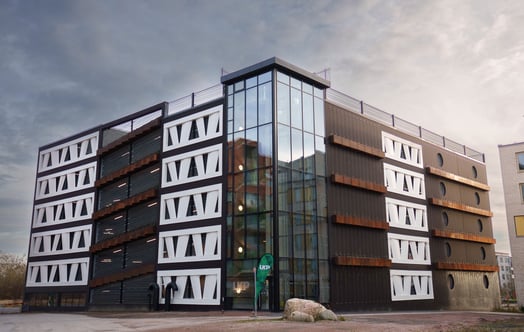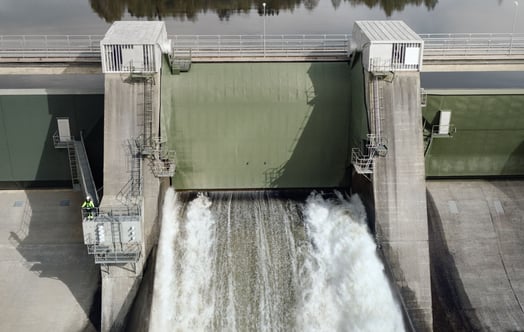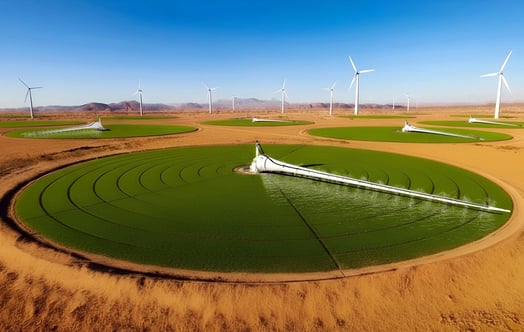The European market for seaweed products is expected to grow tenfold in only a few years. In Denmark, seaweed farmer Mads Hecter is one of the pioneers, now waiting for the coming business boom.
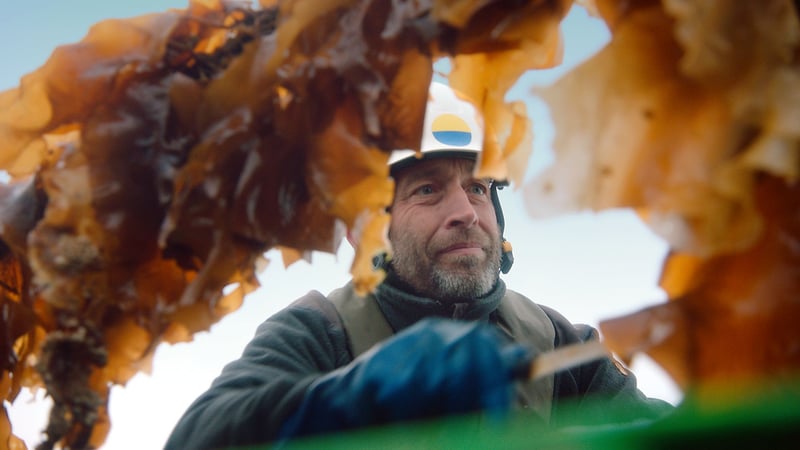
While seaweed has long been an embraced ingredient in Asian cooking—perhaps most famously in sushi and other Japanese delicacies—Europe and other parts of the world are still lagging behind when it comes to making use of it. But this is about to change.
Europe today only accounts for a trickle of the world’s total production, so the potential is huge. The Seaweed for Europe coalition estimates that European demand for seaweed could increase from around 270,000 tonnes in 2019 to 8 million tonnes in 2030 and reach EUR 9 billion in value. Besides creating tens of thousands of jobs, seaweed farming would also contribute to removing thousands of tonnes of phosphorus and nitrogen from European seas annually, mitigating up to 5.4 million tonnes of CO₂ emissions a year and relieving pressure on the land.
Would you like to read more articles like this? Sign up for THE EDIT, your monthly briefing on the journey to fossil freedom.
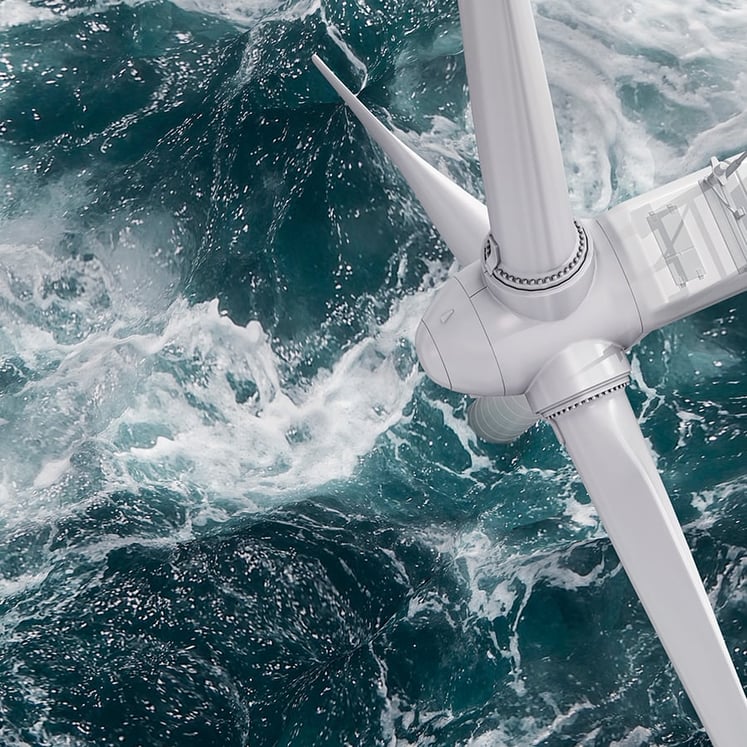
A Danish pioneer
One of the farmers who is helping drive this change is Mads Hecter, owner of Kerteminde Seafarm in Denmark. He started his company in 2018 and has a farm of 19 hectares in Kerteminde Bay.
“When I started, I was one of the first in Denmark. Now there is a growing interest in regenerative ocean farming, and more companies have been started to farm seaweed. For example, some fishermen want to combine fishing with seaweed farming.”
The business is still in its infancy, and parts of the value chain are still missing—for example, good facilities in Denmark for drying the seaweed. Another critical gap is the lack of facilities that can process seaweed into high-value compounds for food, feed, cosmetics, and bio-based materials. Without these, much of the seaweed’s potential remains untapped. Mending such holes in the value chain needs to be prioritised to build a sustainable business. Also, regulatory clarity and streamlined permitting processes are needed to support industry growth.
Sea farming is undoubtedly a great idea. This form of regenerative aquaculture system requires neither freshwater nor fertilisers. The end product is nutritious and tasty, and can be used in a wide range of applications—from food to bio-based chemicals and pharmaceuticals. And it’s good for the sea, as it reduces ocean acidification by removing carbon from the water, and eutrophication by using up nutrients. It can also enhance marine biodiversity by providing habitat for fish and invertebrates.
“I imagine it could take another five to ten years to develop a sustainable seaweed business here,” Hecter says. “In the short term, I don’t think food for humans will be the main product area in our part of the world, as it is in Asia. I think it will take a long time to change habits and also get the food industry to develop the products. But seaweed can be a feedstock for so many uses in other industries, and I believe that biorefinery processes of seaweed are essential for extracting high-value products while also enhancing the market potential of seaweed-based applications.”

A combined seaweed and wind farm
The EU has high expectations for seaweed farming and is funding several projects through its innovation fund Horizon Europe. Mads Hecter’s company, Kerteminde Seafarm, is part of Win@Sea, a project involving Aarhus University and others in cooperation with energy company Vattenfall, with the aim to test and develop methods for growing seaweed and mussels on lines inside windfarms. And Hecter says that there are some clear advantages to moving the farming to deeper waters compared to where most of his farming takes place:
"In shallow inshore waters, nutrients primarily originate from land. During winter, increased rainfall washes these nutrients into the sea, supporting seaweed growth. However, over time, the available nutrients are depleted. By spring, when rainfall decreases and sunlight increases, nutrient levels are too low, and seaweed growth slows or stops."
Offshore, inside the wind farm, there are more natural nutrients in the water, so the levels are more stable, especially in the spring, he says:
“This means we can extend the growing period by between one and two months. Also, there are synergies we can create by cooperating with Vattenfall’s service technicians at the wind farm. When they visit the turbines for service, they can, for example, check our growing lines at the same time. We have the same goal when it comes to sustainable production of power and food.”
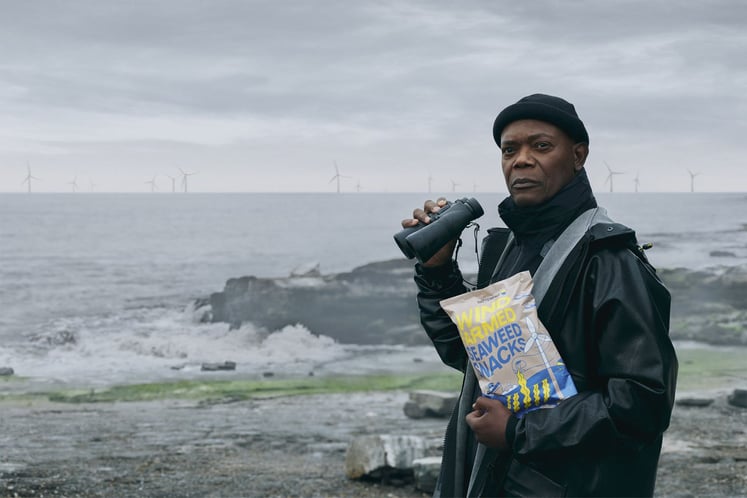
Up for a snack?
.Read more about the Wind Farmed Sea Weed Snacks on Vattenfall's campaign page.
Hollywood helps putting seaweed in the limelight
This summer, Vattenfall put that goal and ambition in the media focus. In August, a large media campaign around the virtues of combined wind and seaweed farming was launched. The campaign, fronted by iconic actor and social justice advocate Samuel L. Jackson, will hopefully bring much-needed attention to the possibilities it could bring if offshore windfarms along European coasts were also used for seaweed production.
“My hopes for this are that it will get the message out about the great advantages and possibilities that seaweed farming could bring, and that it contributes to getting industry involved and raising interest in seaweed products. Personally, for my own company, it would be great if the attention could result, for example, in some new collaborations and buyers.”
Seaweed – good for more than food
Here are 10 examples of what seaweed is great for:
- Food – Snacks, sushi, seasonings; booming in plant-based markets.
- Cosmetics – Used in creams, shampoos, and skincare for natural bioactives.
- Hydrocolloids – Thickening agents (carrageenan, agar, alginate) in food and pharma.
- Biostimulants – Natural fertilizers for organic and regenerative farming.
- Animal feed – Reduces livestock methane; enhances gut health.
- Nutraceuticals – Supplements rich in iodine, fiber, and antioxidants.
- Bioplastics – Sustainable packaging and single-use alternatives.
- Pharmaceuticals – Used in wound care, drug delivery, and antivirals.
- Biofuels – A potential clean energy source (still early-stage).
- Aquaculture – Cleans water and adds value in fish/shellfish farming systems.


